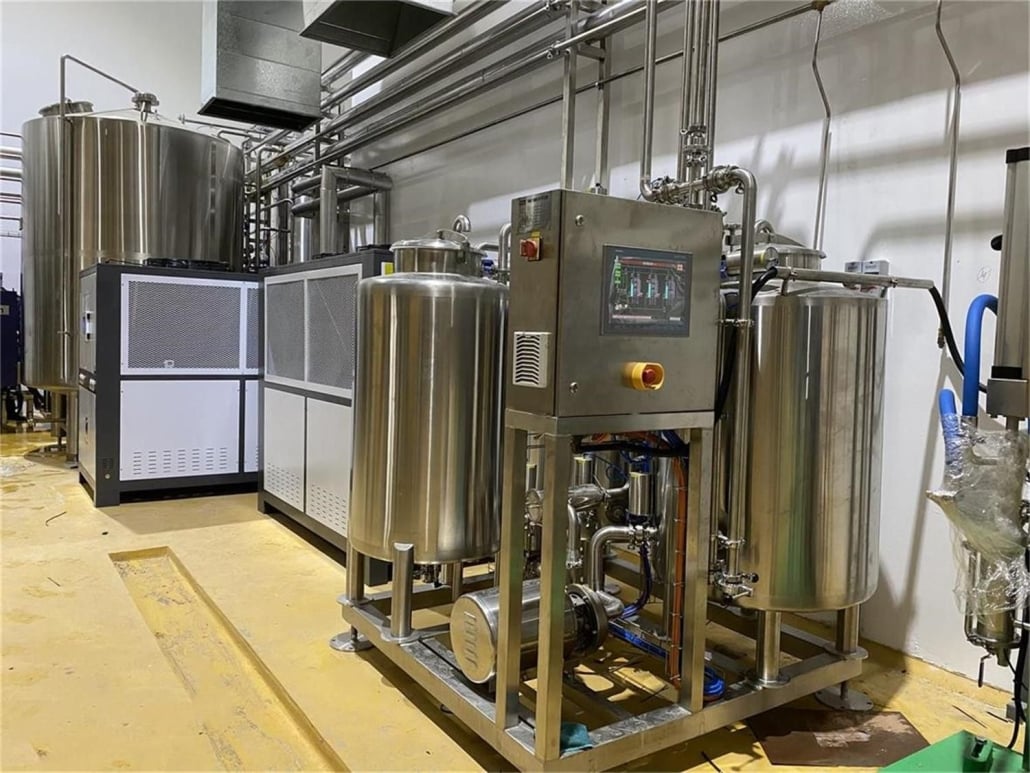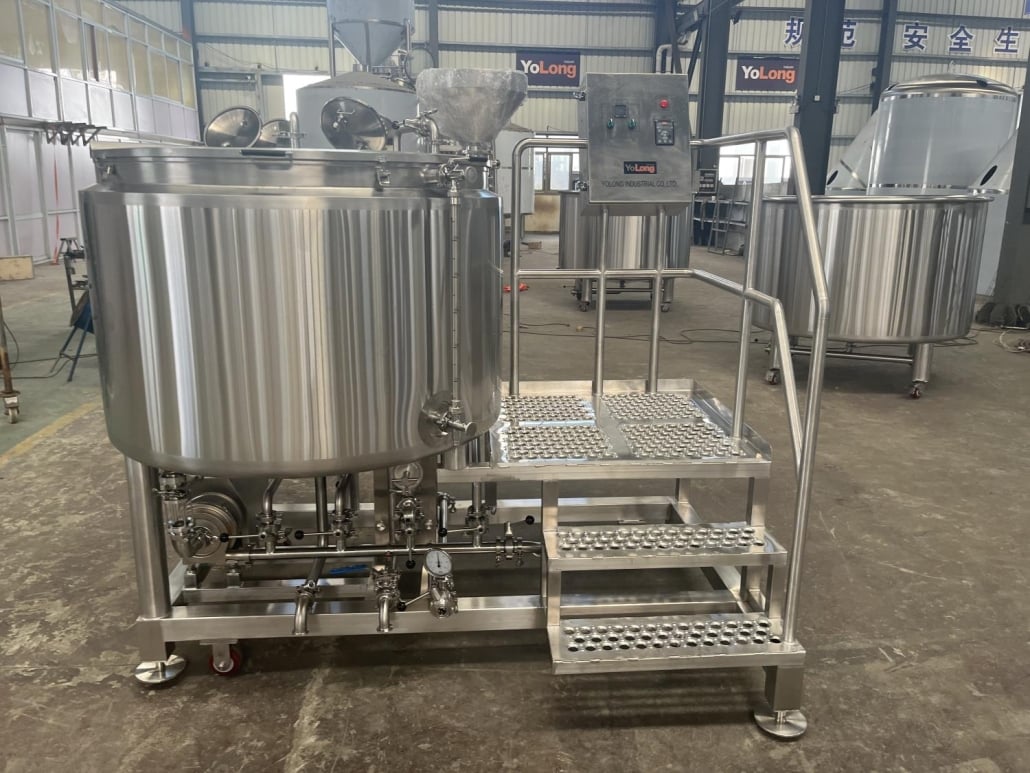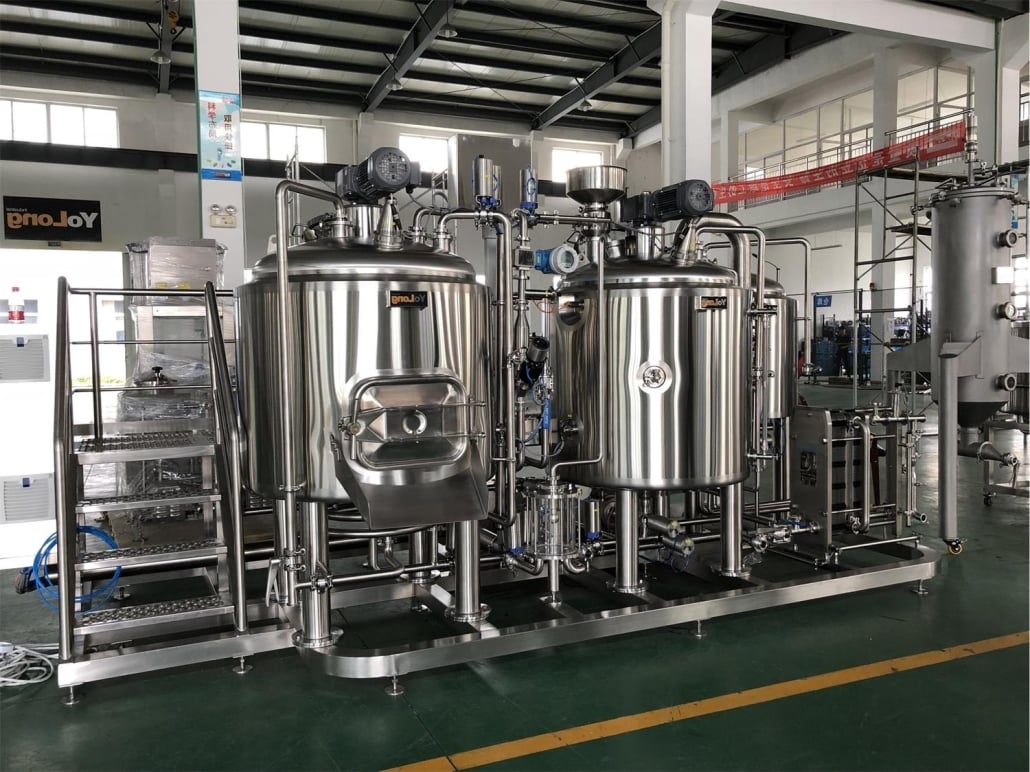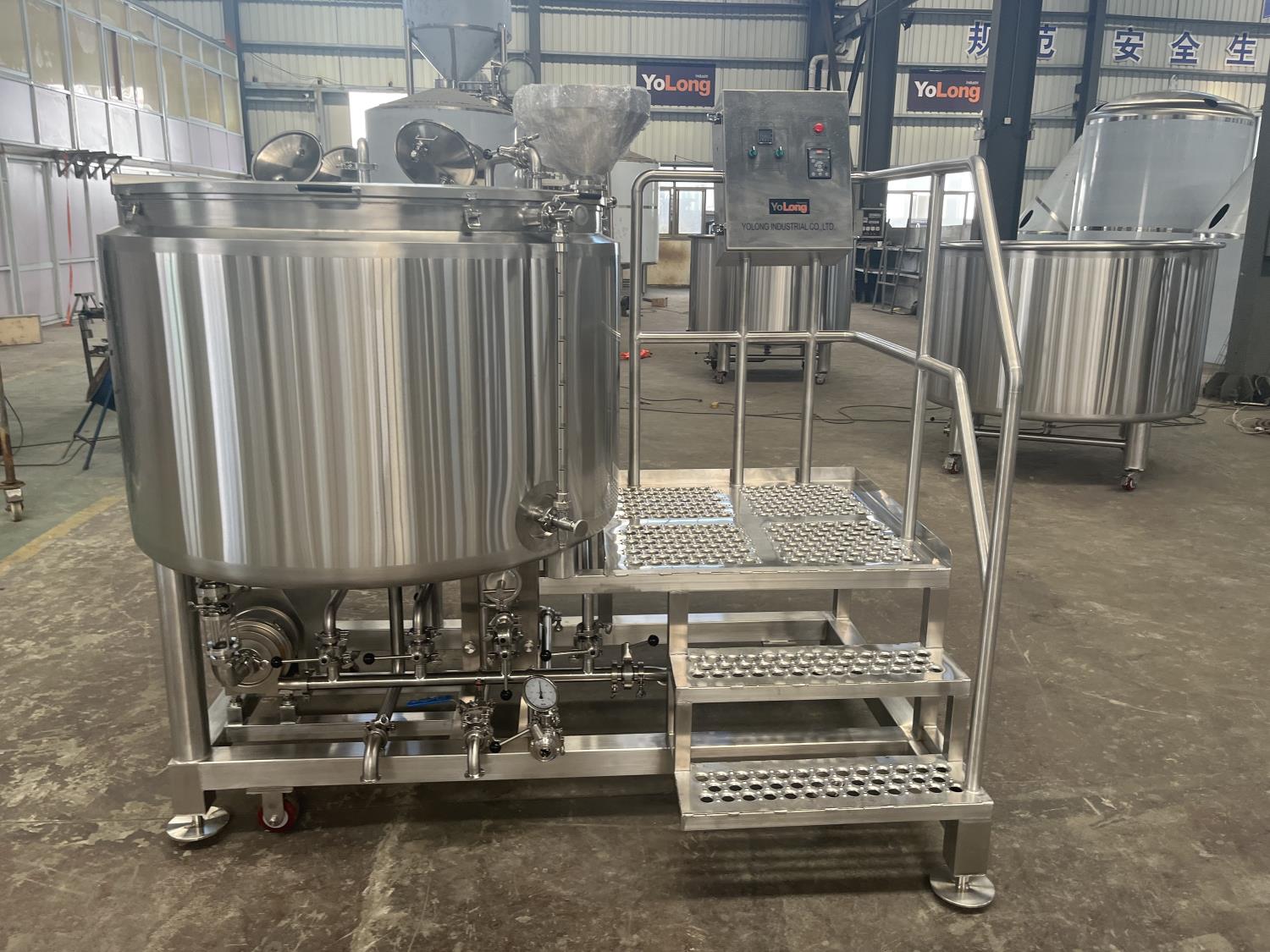stainless steel brewing equipment
Overview
Stainless steel is the undisputed champion material for beer brewing equipment. For both homebrewers and professional craft brewers, stainless steel offers a winning combination of durability, sanitation, and brewing performance. This guide dives deep into the world of stainless steel brewing equipment, exploring the essential tools, the brewing process, and the factors to consider when choosing your setup.
Essential Stainless Steel Brewing Equipment
Here’s a breakdown of the core equipment you’ll find in most stainless steel brewing systems:
| Equipment | Description |
|---|---|
| Brew Kettle | The workhorse of the brewing process, the kettle is where your wort (unfermented beer) is boiled. Stainless steel kettles offer excellent heat distribution and are easy to clean. |
| Mash Tun (Optional) | For all-grain brewing, a mash tun is used to convert starches from grains into fermentable sugars. Many kettles can be used as mash tuns with the addition of a false bottom. |
| Lauter Tun (Optional) | In larger brewing systems, a lauter tun separates the liquid wort from the spent grain after mashing. |
| Hot Liquor Tank (HLT) (Optional) | Maintains hot water at the ready for mashing and sparging. |
| Cooling Coil/Plate Chiller | Rapidly cools the wort after boiling to prevent off-flavors and prepare it for fermentation. |
| Fermenter | The vessel where yeast transforms wort into beer through fermentation. Stainless steel fermenters are known for their durability and ease of sanitation. |
| Brite Tank (Optional) | Used in professional breweries to clarify, carbonate, and age beer before packaging. |
| Kegging System (Optional) | Allows for serving beer on tap under pressure, perfect for homebrewers who enjoy fresh, draft-style beer. |

Features of Stainless Steel Beer Brewing Equipment
Stainless steel reigns supreme in brewing equipment for several reasons:
- Durability: Stainless steel is built to last. It can withstand the high temperatures and wear and tear involved in the brewing process, making it a long-term investment.
- Sanitation: Stainless steel is non-porous and resists the growth of bacteria, promoting cleaner brewing and reducing the risk of contamination. It’s also easy to sanitize with cleaning solutions.
- Heat Distribution: Stainless steel conducts heat evenly, ensuring consistent temperatures throughout your wort during boiling and mashing.
- Aesthetics: Stainless steel brewing equipment has a professional and polished look that can elevate any home brewery.
The Brewing Process with Stainless Steel Equipment
The brewing process can be broken down into several key stages:
- Mashing: Grains are steeped in hot water to convert starches into fermentable sugars. A stainless steel mash tun provides excellent temperature control for optimal enzyme activity.
- Lautering (Optional): The wort (sugar-rich liquid) is separated from the spent grains. A dedicated lauter tun can streamline this process in larger systems.
- Boiling: The wort is boiled in a stainless steel kettle to sterilize it, concentrate flavors and bitterness from hops, and stop enzyme activity.
- Cooling: The wort is rapidly chilled using a coil or plate chiller to prevent the formation of off-flavors and prepare it for fermentation.
- Fermentation: Yeast is pitched into the cooled wort in a stainless steel fermenter, where it converts sugars into alcohol and carbon dioxide.
- Conditioning (Optional): The fermented beer is allowed to mature in a tank or keg to allow flavors to develop and harmonize.
- Packaging (Optional): The finished beer is bottled, kegged, or canned for enjoyment.
Choosing the Right Stainless Steel Brewing Equipment
Selecting the right stainless steel brewing equipment depends on several factors:
- Batch Size: Consider how much beer you plan to brew per batch. Kettles and fermenters come in a range of sizes to suit your needs.
- Brewing Method: Do you plan to brew extract brewing (using malt extract) or all-grain brewing (using whole grains)? If brewing all-grain, a mash tun or lauter tun may be necessary.
- Budget: Stainless steel brewing equipment can range in price from basic setups for homebrewers to elaborate systems for professional breweries.
- Experience Level: As a beginner, you may prefer a simpler setup and can upgrade later as your skills and passion grow.
- Space Constraints: Measure your available space to ensure your chosen equipment will fit comfortably.

Capacity, Space, Design, Layout, and Customization
Here’s a table outlining key considerations for different aspects of your stainless steel brewing equipment:
Here’s a table outlining key considerations for different aspects of your stainless steel brewing equipment:
| Feature | Description |
|---|---|
| Capacity | Brew kettles and fermenters typically range from 1 gallon for homebrewers up to hundreds of gallons for professional breweries. Choose a size that aligns with your batch size and brewing goals. |
| Space | Measure your brewing area to ensure your equipment will fit comfortably. Consider factors like headroom for lifting lids and clearance for hoses and pumps. |
| Design | Stainless steel brewing equipment comes in a variety of designs. Kettles may have single, double, or triple walls for insulation. Fermenters can be conical for easier yeast collection or cylindrical for space optimization. |
| Layout | Plan the layout of your brewing equipment for efficient workflow. Consider the proximity of your kettle to your water source and the placement of your fermenters for temperature control. |
| Customization | Some manufacturers offer customization options for their stainless steel brewing equipment. This may include adding ports for thermometers, valves for easier draining, or even custom engraving. |
Stainless Steel Beer Brewing Equipment Price Range
The cost of stainless steel brewing equipment varies depending on several factors, including:
- Size: Larger equipment naturally costs more than smaller setups.
- Features: Equipment with advanced features like jackets for temperature control or integrated pumps will have a higher price tag.
- Brand: Well-known brands in the brewing industry may command a premium price.
Here’s a table outlining a general price range for common stainless steel brewing equipment:
| Equipment | Price Range (USD) |
|---|---|
| Brew Kettle (10 Gallon) | $200 – $500 |
| Mash Tun (10 Gallon) | $200 – $800 |
| Lauter Tun (10 Gallon) | $500 – $1,500 |
| Hot Liquor Tank (HLT) (10 Gallon) | $300 – $1,000 |
| Cooling Coil/Plate Chiller | $50 – $300 |
| Fermenter (10 Gallon) | $100 – $400 |
| Brite Tank (10 Gallon) | $1,000 – $3,000+ |
| Kegging System (Basic) | $200 – $500 |
Please note: These prices are estimates and can vary depending on the specific features and brand of the equipment.
Installation, Operation, and Maintenance
Proper installation, operation, and maintenance are crucial for getting the most out of your stainless steel brewing equipment. Here’s a table outlining some key points:
| Stage | Description |
|---|---|
| Installation | For complex brewing systems, professional installation may be recommended. Ensure proper plumbing and electrical connections are made according to safety regulations. |
| Operation | Familiarize yourself with the manufacturer’s instructions for each piece of equipment. This includes proper use of valves, thermometers, and cleaning procedures. |
| Maintenance | Regular cleaning and sanitation are essential to prevent contamination and ensure the longevity of your equipment. After each brew, thoroughly clean your equipment with hot water and a sanitizing solution. |
Choosing a Supplier for Stainless Steel Brewing Equipment
When selecting a supplier for your stainless steel brewing equipment, consider these factors:
- Reputation: Research the supplier’s reputation for quality products and customer service. Read online reviews and testimonials from other brewers.
- Selection: Choose a supplier that offers a wide selection of equipment to suit your needs and budget.
- Pricing: Compare prices from different suppliers to find the best value for your money.
- Customer Service: Look for a supplier with knowledgeable customer service representatives who can answer your questions and provide support.
- Warranty: Ensure the equipment comes with a warranty that covers defects in materials and workmanship.
Stainless Steel Beer Brewing Equipment: Pros and Cons
Pros
- Durability: Stainless steel is built to last and can withstand the rigors of brewing for many years.
- Sanitation: Stainless steel is easy to clean and sanitize, promoting a hygienic brewing process.
- Heat Distribution: Stainless steel conducts heat evenly, ensuring consistent temperatures for optimal brewing.
- Aesthetics: Stainless steel brewing equipment has a professional and polished look that enhances any home brewery.
C
Cons
- Cost: Stainless steel brewing equipment can be more expensive than equipment made from other materials like plastic.
- Weight: Stainless steel is a heavy material, which can make it challenging to move large equipment around.
- Scratches: While durable, stainless steel can show scratches more easily than some other materials.
Making the Right Choice
The decision of whether stainless steel brewing equipment is right for you depends on your individual needs and priorities. Here are some things to consider:
- Budget: If you are on a tight budget, you may want to consider starting with a more basic setup made from another material. However, stainless steel is a long-term investment that will last for many years.
- Experience Level: For beginner brewers, a simpler setup may be sufficient. As your skills and passion for brewing grow, you can invest in stainless steel equipment.
- Batch Size: If you plan to brew large batches of beer, stainless steel equipment is the best choice for durability and heat distribution.
Stainless Steel vs. Other Materials
Here’s a brief comparison of stainless steel to other commonly used materials in brewing equipment:
- Plastic: Plastic is a lightweight and affordable option, but it can be less durable and may harbor bacteria.
- Glass: Glass carboys are popular for fermentation, but they are fragile and can be easily broken.
- Aluminum: Aluminum is lightweight and conducts heat well, but it can be susceptible to dents and scratches. It’s also not ideal for boiling wort due to potential interactions with hops.
Ultimately, stainless steel offers the best combination of durability, sanitation, and performance for brewing beer. While it may have a higher upfront cost, it’s a worthwhile investment for serious homebrewers and professional craft brewers alike.

FAQ
Q: What is the best type of stainless steel for brewing equipment?
A: For brewing equipment, 304 stainless steel is a common and versatile choice. It offers good corrosion resistance and is easy to clean. Some higher-end equipment may use 316 stainless steel, which offers even greater resistance to corrosion.
Q: How do I clean and sanitize my stainless steel brewing equipment?
A: After each use, thoroughly clean your equipment with hot water and a brewing-specific cleaning solution. You can then sanitize your equipment with a no-rinse sanitizer or a chemical sanitizer according to the manufacturer’s instructions.
Q: Can I modify my stainless steel brewing equipment?
A: Depending on your skills and the complexity of the modification, it may be possible to modify your stainless steel brewing equipment. However, it’s important to exercise caution and ensure any modifications are done safely and do not compromise the integrity of the equipment. For complex modifications, consulting a professional welder or fabricator is recommended.
Q: Where can I find used stainless steel brewing equipment?
A: There are several places to find used stainless steel brewing equipment, including online marketplaces, homebrew clubs, and classified ads. Be sure to inspect the equipment carefully before purchasing to ensure it is in good condition and free of leaks or damage.
Conclusion
Stainless steel brewing equipment is the gold standard for homebrewers and professional brewers alike. Its durability, sanitation benefits, and excellent heat distribution make it an ideal choice for crafting high-quality beer. By considering your needs, budget, and brewing goals, you can select the perfect stainless steel brewing equipment to embark on your brewing journey. Whether you’re a homebrew enthusiast or a passionate craft brewer, stainless steel equipment will provide you with the tools you need to create delicious and exceptional beers.
Share this entry
Interested in learning more about Brewing Systems including additional details and pricing information? Please use the form below to contact us!
YOLONG BREWERY EQUIPMENT FAQS
- Commercial Brewery / Craft Brewery / Microbrewery / Nanobrewery
- What is The Difference Between Craft Beer and Industrial Beer?
- The Bespoke Differences In Custom Brewing Systems
- Everything You Need to Know About Kettle Souring
- How to Choose Brewing Equipment for Your business?
- How To Choose The-Best Partner To Build Your Commercial Microbrewing System?
- Two Detection Sensors That You Need To Use In Your Brewhouse System
- Remote Control Applications in Brewing Equipment/How does it work?
- How To Clean Your Brand New Brewery Tanks?

